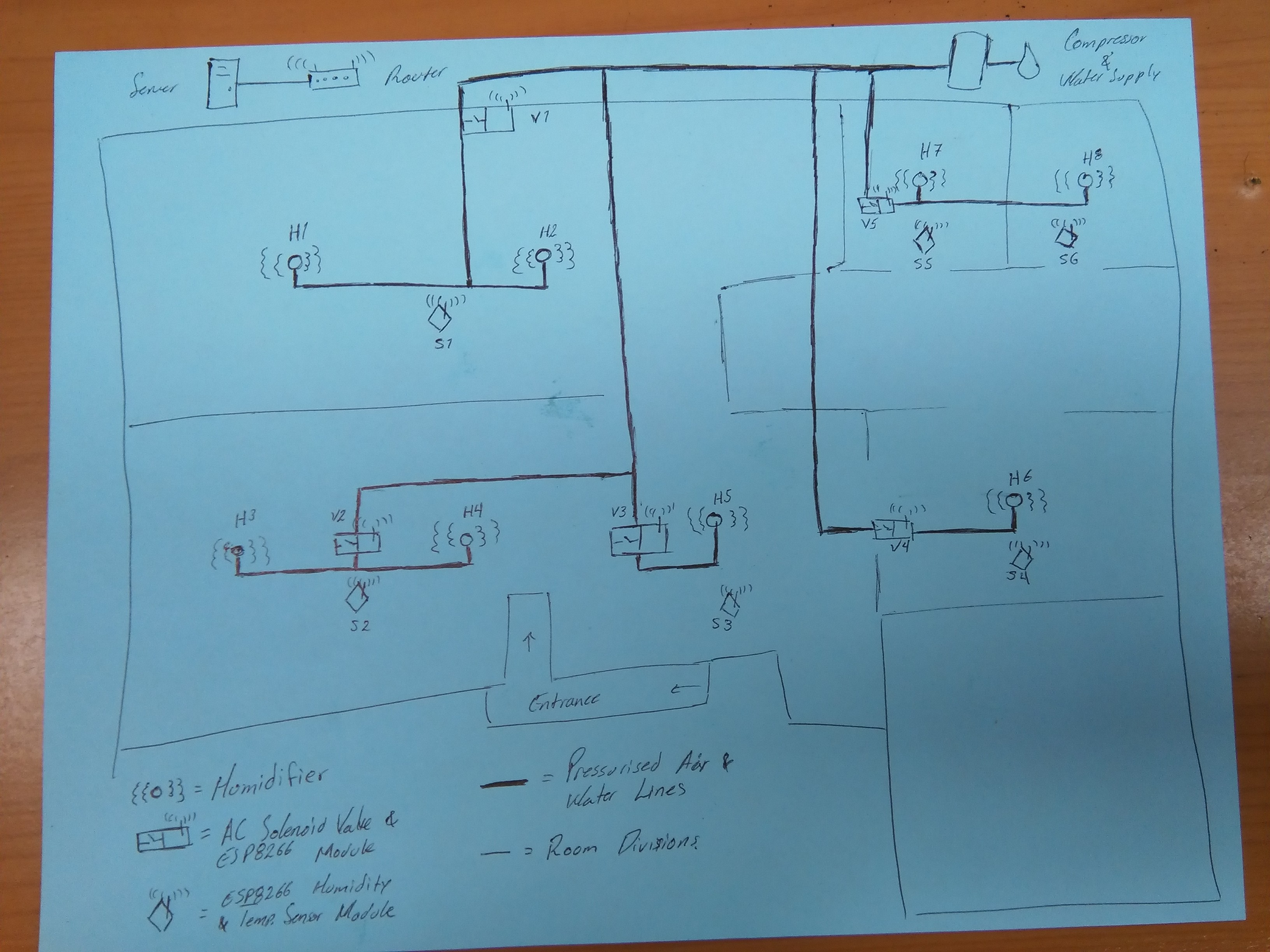Purpose
- Capture humidity & temperature data from different areas in a facility.
- Register the collected data into a central database.
- Automatically actuate humidifiers or AC equipment to keep the areas in the required temperature & humidity range.
Established Goals
- Buy the damn components & materials
- Build H&T module sensor
- Build Solenoid valve control module
- Create database server
- Setup MQTT or ... build WEB API???
- Program H&T modules to send their data to the server ... broker?
- Program control modules to receive commands & actuate solenoid valves
- Setup
- Analysis & Calibration
- Success!!!
- Profit? ... Maybe? ... Hope so ...
 Arturo Aldaco Perea
Arturo Aldaco Perea

What are you intending to use to control the humidity?